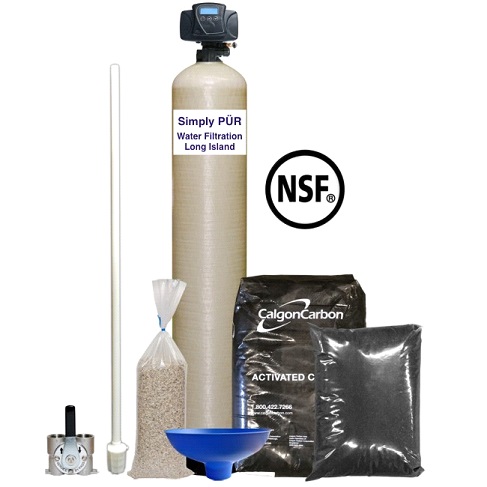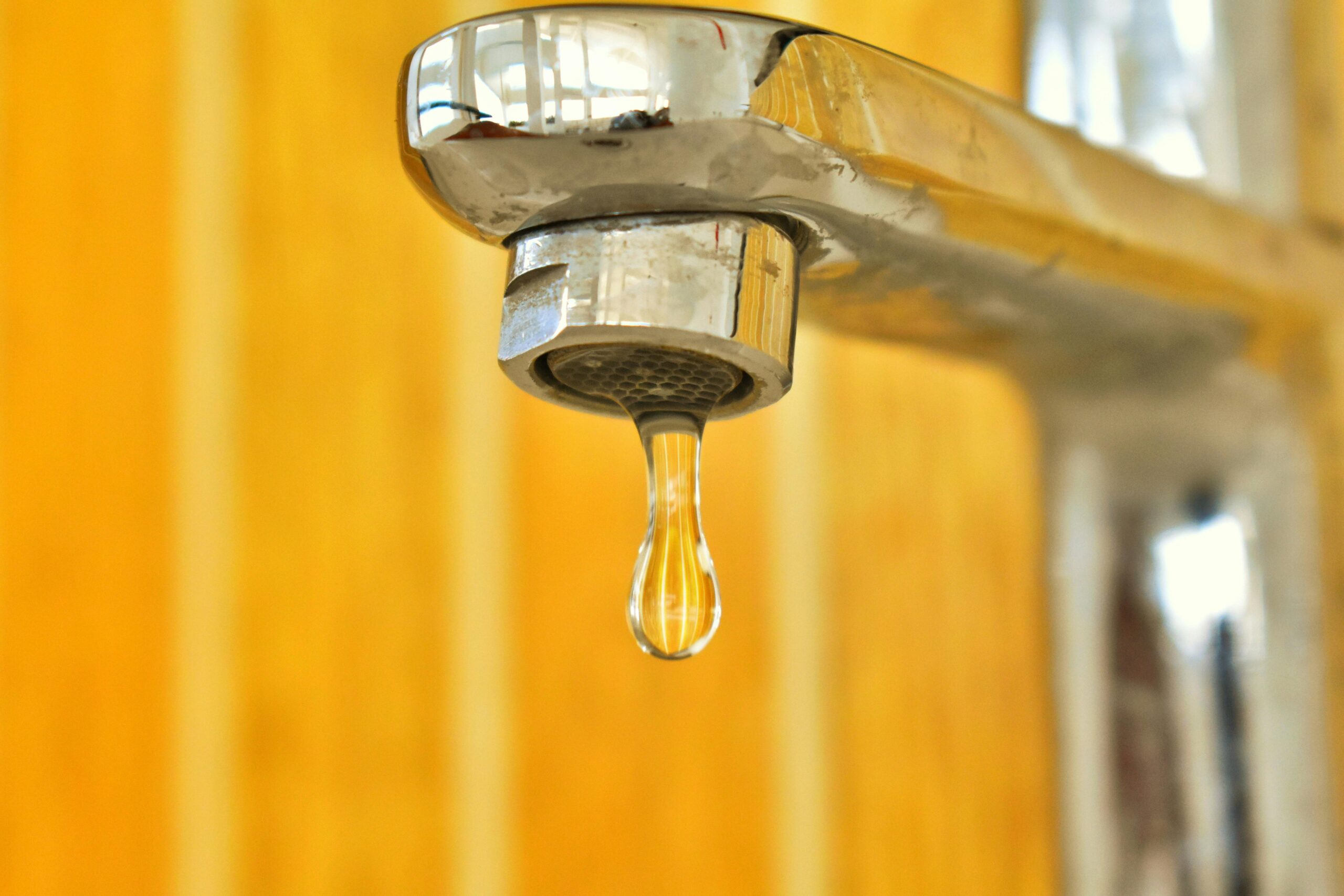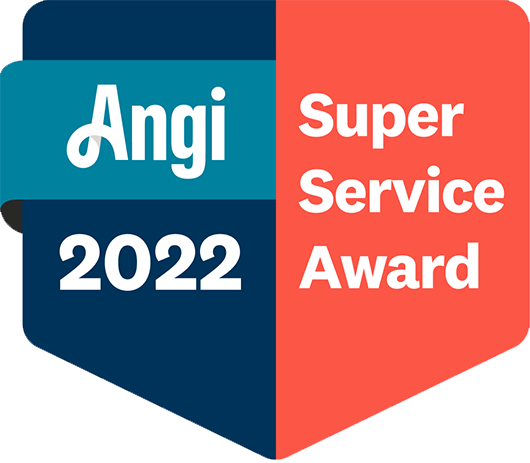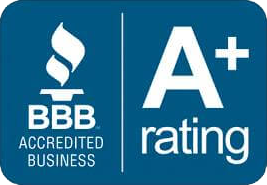Long Island’s communities relying on both municipal systems and private wells face persistent contamination challenges. The island’s porous soils and aquifer-based water supply make it especially vulnerable. Here are five of the most concerning pollutants:
1. PFAS (PFOA and PFOS)
PFAS, often called “forever chemicals,” are highly durable and resistant to breaking down in the environment. These man-made chemicals are used in products such as nonstick cookware, firefighting foam, and water-resistant clothing. These chemicals enter Long Island’s groundwater through industrial sites and consumer product disposal, making them a widespread and persistent problem. PFAS was found to be 2.5 times above EWG’s Health Guideline. PFAS exposure has been linked to immune system dysfunction, developmental issues, and increased risks of cancer.
2. Iron (EPA Secondary MCL – 0.3 ppm)
Iron is naturally present due to Long Island’s geology, leaching from soil and bedrock into groundwater. Excess iron causes rust-colored water, staining, metallic taste, and clogging issues. At levels above the EPA’s Secondary Maximum Contaminant Level (SMCL) of 0.3 parts per million (ppm), residents may notice:
- Rust-colored or yellowish water, which can stain sinks, tubs, toilets, and laundry.
- A strong metallic taste that makes tap water unpleasant for drinking and cooking.
- Clogging of pipes and appliances as iron precipitates out of solution, reducing plumbing efficiency and shortening the lifespan of fixtures, dishwashers, and washing machines.
- A “slimy” buildup in toilets and pipes caused by iron bacteria, which thrive on iron deposits in groundwater systems.
Both municipal and private well users face iron contamination on Long Island. For homeowners, advanced filtration methods such as reverse osmosis (RO) can help address iron contamination, ensuring clear, clean, and better-tasting water.
3. Hexavalent Chromium
Hexavalent chromium (often referred to as “chromium-6”) is a highly toxic and carcinogenic form of chromium. According to the Environmental Working Group (EWG), chromium-6 contaminates the tap water of over 250 million Americans across every U.S. state and territory.
The chemical poses serious health risks. Chronic ingestion has been linked to liver and reproductive damage, impaired development in offspring, and is strongly associated with gastrointestinal cancers. Certain populations, particularly infants, children, those with liver issues, or individuals taking antacids, are especially vulnerable.
Despite these known dangers, the U.S. EPA has not yet established a federal legal limit for chromium-6. As for Long Island, data from the EWG database reveals troubling levels of chromium-6 with the Hicksville Water District water supply measuring 0.476 ppb of hexavalent chromium.
4. Chlorine and Disinfection By-Products (DBPs)
Disinfectants like chlorine are essential for eliminating pathogens in water supplies, but their interaction with organic matter produces harmful byproducts, including trihalomethanes (THMs). These byproducts are linked to cancer and other health issues. Alarmingly, levels of TTHMs in some Long Island water systems exceed health guidelines by more than 34 times.
5. VOC Contaminants – PCE/TCE from the Bethpage Plume
Volatile organic compounds (VOCs) such as TCE (trichloroethylene) and PCE (tetrachloroethylene) are legacy industrial solvents traced to the Northrop Grumman operations in Bethpage. The resulting Bethpage Plume spans over 6 square miles and delves nearly 900 feet underground, slowly migrating through the aquifer at about 1 foot per day.
Protecting Yourself with Simply PURE
The presence of these contaminants in Long Island’s water supply highlights the need for advanced water filtration systems. Reverse osmosis (RO) filtration is one of the most effective methods for removing contaminants At Simply PURE, we offer customized water purification solutions designed to address Long Island’s specific water quality challenges. Our systems ensure clean, safe water for drinking, cooking, and everyday use, giving you peace of mind.
Want to learn more? Contact us at Simply PURE Water Filtration to get your water analyzed, and find out more about what’s in your water!
About Simply PURE Water Filtration Services
Living in and serving the Long Island community, we strive to make sure everyone has access to clean, healthy water. We have the experience, knowledge, and industry-leading technology to provide clean water solutions for water impurities, contaminants, hard water, bad tasting/odors, well water, acidity & pH regulations.
Proud members of the WQA (Water Quality Association), and the EWQA (Eastern Water Quality Association), we adhere to strict guidelines and the WQA code of ethics. As a Pentair True Blue Partner and Authorized Distributor of Pentair Products, there’s nothing comparable to the performance, and efficiency of our whole house purification systems, water softeners, neutralizers, whole-house filters, and alkaline reverse osmosis systems for drinking in the convenience of your home.


Our products are all NSF / ANSI certified, meeting the highest safety standards and quality performance. Providing our community with only the best experience of high quality water that’s Simply PURE from our family to yours!
Simply PURE utilizes accurate testing methods before and after system installation, as well as annual maintenance of all your water treatment equipment. Our Revolutionary Custom Built Water Treatment systems upon the completion of a Free In-Home Water Analysis, or an in-depth Comprehensive Water Analysis of your choice sent to our Certified Laboratory.




